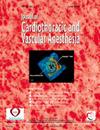Advances in Cardiovascular Pharmacotherapy. II. Ivabradine, an Inhibitor of the Hyperpolarization-Activated Cyclic Nucleotide-Gated Channel
IF 2.3
4区 医学
Q2 ANESTHESIOLOGY
Journal of cardiothoracic and vascular anesthesia
Pub Date : 2025-03-20
DOI:10.1053/j.jvca.2025.03.029
引用次数: 0
Abstract
Ivabradine selectively reduces heart rate by inhibiting the hyperpolarization-activated cyclic nucleotide-gated (HCN) channel in the sinoatrial node. Unlike other medications that produce negative chronotropic effects [beta-blockers, calcium channel blockers], ivabradine does not affect systemic, pulmonary, and coronary hemodynamics. Despite several proof-of-concept clinical studies suggesting that ivabradine may exert anti-ischemic effects, two large randomized trials did not support its use in patients with chronic stable angina. Preliminary data also did not support the use of ivabradine in patients with acute ST-segment elevation myocardial infarction or acutely decompensated heart failure. However, ivabradine improved outcome in patients with heart failure with reduced ejection fraction (HFrEF), leading to its approval by the Food and Drug Administration, but the drug failed to do so in those with heart failure with preserved ejection fraction (HFpEF). Ivabradine may also be useful in cardiac electrophysiology disorders characterized by tachycardia (e.g., inappropriate sinus tachycardia, postural orthostatic tachycardia syndrome), but it has not yet gained wide acceptance for these indications. In this article, the authors briefly review the structure and function of the cardiac HCN channel; discuss the development and actions of drugs, including ivabradine, that modulate the channel's activity; describe in detail the potential clinical applications of ivabradine in patients with coronary artery disease, HFrEF and HFpEF, and cardiac electrophysiology; comment on the adverse effects of ivabradine therapy; and finally, consider the potential anesthetic implications of ivabradine in patients undergoing noncardiac and cardiac surgery.
心血管药物治疗进展。2。伊伐布雷定:一种超极化活化环核苷酸门控通道抑制剂。
伊伐布雷定通过抑制中房结中超极化激活的环核苷酸门控(HCN)通道,选择性地降低心率。与其他会产生负向时序作用的药物(β-受体阻滞剂、钙通道阻滞剂)不同,伊伐布雷定不会影响全身、肺部和冠状动脉血流动力学。尽管几项概念验证临床研究表明伊伐布雷定可能具有抗缺血作用,但两项大型随机试验并不支持将其用于慢性稳定型心绞痛患者。初步数据也不支持在急性 ST 段抬高型心肌梗死或急性失代偿性心力衰竭患者中使用伊伐布雷定。不过,伊伐布雷定改善了射血分数减低型心衰(HFrEF)患者的预后,因此获得了美国食品药品管理局的批准,但该药物未能改善射血分数保留型心衰(HFpEF)患者的预后。伊伐布雷定还可用于以心动过速为特征的心脏电生理学疾病(如不适当窦性心动过速、体位性正位性心动过速综合征),但在这些适应症中尚未获得广泛认可。在本文中,作者简要回顾了心脏 HCN 通道的结构和功能;讨论了包括伊伐布雷定在内的调节该通道活性的药物的开发和作用;详细描述了伊伐布雷定在冠心病、HFrEF 和 HFpEF 以及心脏电生理学患者中的潜在临床应用;评论了伊伐布雷定治疗的不良反应;最后,考虑了伊伐布雷定对接受非心脏手术和心脏手术患者的潜在麻醉影响。
本文章由计算机程序翻译,如有差异,请以英文原文为准。
求助全文
约1分钟内获得全文
求助全文
来源期刊
CiteScore
4.80
自引率
17.90%
发文量
606
审稿时长
37 days
期刊介绍:
The Journal of Cardiothoracic and Vascular Anesthesia is primarily aimed at anesthesiologists who deal with patients undergoing cardiac, thoracic or vascular surgical procedures. JCVA features a multidisciplinary approach, with contributions from cardiac, vascular and thoracic surgeons, cardiologists, and other related specialists. Emphasis is placed on rapid publication of clinically relevant material.

 求助内容:
求助内容: 应助结果提醒方式:
应助结果提醒方式:


